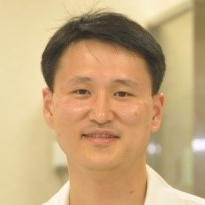Recent Advances in Periodontics and Dental Implantology: Part II
A special issue of Medicina (ISSN 1648-9144). This special issue belongs to the section "Dentistry and Oral Health".
Deadline for manuscript submissions: closed (30 September 2024) | Viewed by 49262
Special Issue Editor
Interests: bone; bone biology; tissue engineering; stem cells; instrumentation; enzyme kinetics; bone regeneration; dental implants; biomaterials; oral health
Special Issues, Collections and Topics in MDPI journals
Special Issue Information
Dear Colleagues,
With the advancement of technology, great progress has been made in the periodontology field. The prevalence of periodontal disease is relatively high and has been reported at 20–45% or higher. Various treatments and biomaterials have been applied to increase the effectiveness of periodontal treatment. The long-term effects of periodontal treatment have been published. Despite advances in periodontal treatment, tooth extraction and further implant placement are being made. A protocol to increase the success rate of implants has been proposed. Various methods have been proposed that can be used in areas where the placement of dental implants is difficult. Stem cells and growth factors have been used as various biomaterials.
The scope of this Special Issue will serve as a forum for papers addressing the following concepts:
- Understanding and mechanisms of periodontal disease;
- Treatment of periodontal disease;
- Short- and long-term effects of periodontal treatment;
- Various soft and hard tissue regeneration methods;
- Clinical outcome of dental implants;
- Enhancement of efficacy with application of growth factors;
- Cell therapy in periodontal and implant treatment.
Dr. Jun-Beom Park
Guest Editor
Manuscript Submission Information
Manuscripts should be submitted online at www.mdpi.com by registering and logging in to this website. Once you are registered, click here to go to the submission form. Manuscripts can be submitted until the deadline. All submissions that pass pre-check are peer-reviewed. Accepted papers will be published continuously in the journal (as soon as accepted) and will be listed together on the special issue website. Research articles, review articles as well as short communications are invited. For planned papers, a title and short abstract (about 250 words) can be sent to the Editorial Office for assessment.
Submitted manuscripts should not have been published previously, nor be under consideration for publication elsewhere (except conference proceedings papers). All manuscripts are thoroughly refereed through a single-blind peer-review process. A guide for authors and other relevant information for submission of manuscripts is available on the Instructions for Authors page. Medicina is an international peer-reviewed open access monthly journal published by MDPI.
Please visit the Instructions for Authors page before submitting a manuscript. The Article Processing Charge (APC) for publication in this open access journal is 2200 CHF (Swiss Francs). Submitted papers should be well formatted and use good English. Authors may use MDPI's English editing service prior to publication or during author revisions.
Keywords
- periodontitis
- inflammation
- epidemiology
- oral health
- bone regeneration
- bone biology
- tissue engineering
- dental implants
- biomaterials
- stem cells
Benefits of Publishing in a Special Issue
- Ease of navigation: Grouping papers by topic helps scholars navigate broad scope journals more efficiently.
- Greater discoverability: Special Issues support the reach and impact of scientific research. Articles in Special Issues are more discoverable and cited more frequently.
- Expansion of research network: Special Issues facilitate connections among authors, fostering scientific collaborations.
- External promotion: Articles in Special Issues are often promoted through the journal's social media, increasing their visibility.
- Reprint: MDPI Books provides the opportunity to republish successful Special Issues in book format, both online and in print.
Further information on MDPI's Special Issue policies can be found here.






